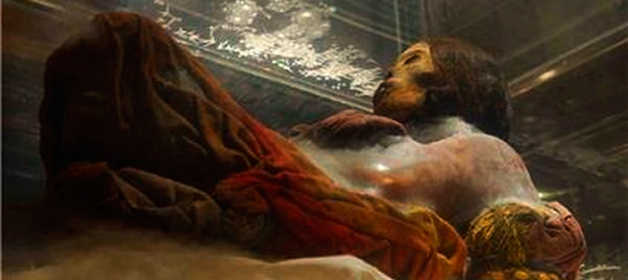It was founded in 1969 by the Marianist Brother Doctor Roberto Wood, who gathered a group of teachers for the specialty who at the same time organized the Institute of Pre-Columbian Studies, which was born with the museum in 1970, thus initiating the professional career of Archaeology at the university, constituting the first outside of Lima.
The museum has 8 rooms that present the cultural development of the Arequipa region from the high Andean hunter-gatherers (10,000 B.C.) to the arrival of the Europeans in the 14th century and ending with the Republic.

Calle Cruz Verde 303 Cercado Arequipa
Pre-agro-Pottery Period: Represented by the pre-ceramic rock shelter of Pintasayoc, a stage where the lithic stage is developed (projectile points, knives and scrapers), Early Intermediate Period: From Nazca influence reaches Arequipa along the coast to near its capital. They are farmers, ranchers, fishermen and seafood gatherers.
Late Intermediate Period. Local Kingdoms Churajon Lordship: Occupies the provinces of Islay (Arequipa) and Sanchez Cerro (Moquegua), dedicated to livestock, agriculture developing the infrastructure of andenería of Arequipa and tricolor ceramics (red, black and cream) with geometric decoration.
Chiribaya Kingdom. They occupied the land of Moquegua, their major developments were: Ceramics (geometric decoration and use of 5 colors) and textiles (simple fabrics to tapestries).Aruni Kingdom: Corresponds to Condesuyos (Arequipa), its most representative ceramics: bases and dishes characterized by being modeled, representations of camelids, suris, snakes, geometric decoration with 8-point star.
Late Intermediate Period. Colla Kingdom: It develops in the Altiplano on the shores of Titicaca. There was a Colla presence up to the coast of Arequipa for crop production.
Late Horizon Tahuantinsuyo Kingdom. It developed in the valley of Cusco occupying almost all the Coast and Highlands of South America. Its territory was equivalent to 3 times the Roman Empire. They developed all the agricultural, architectural, hydraulic, etc. techniques. The most characteristic pottery was called Aribalo.
The Incas managed to organize the Tahuantinsuyo in less than a century. They stand out for the funeral bundles that are woven in Ichu, we also find textiles, metallurgy, ceramics.
Andean Textiles. The production of textiles was made of cotton, camelid wool (vicuña, alpaca and llama) and feathers. The uses of textiles were: as clothing, fishing nets, bags, sashes, blankets, hats, turbans, among others.
Colonial Period: Period since the arrival of the Spaniards to Arequipa. The best testimonies are the glassware, earthenware and iron objects brought from Europe.
Hours (all year round). Monday to Friday from 09

Happy passengers